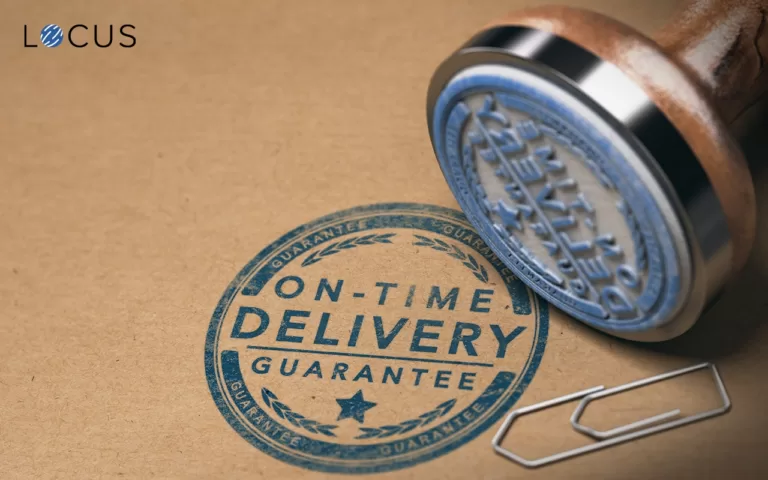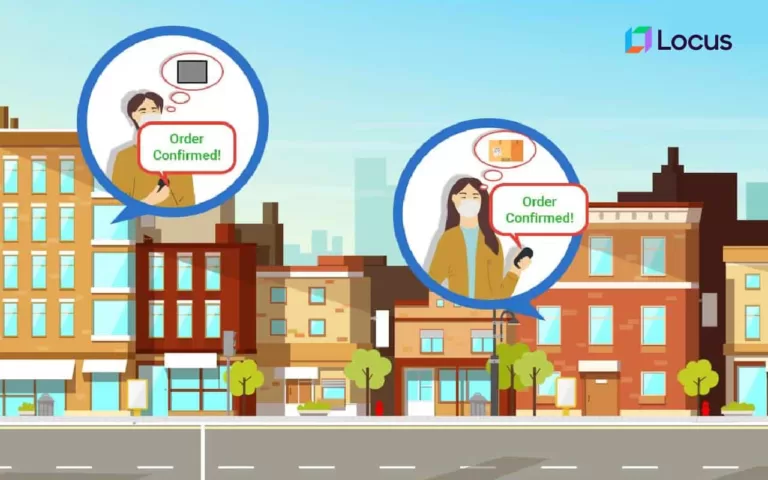E-Commerce, Last Mile Delivery Optimization
Last Mile Delivery Innovations for E-commerce Industry
Mar 17, 2020
9 mins read
What’s new in the last mile delivery innovations for E-commerce?

Fleet drivers, these days, are usually in the tense ‘eleventh-hour’ exam prep mode when they are set for delivery. With increasing complexities in last-mile deliveries, it is becoming challenging to fulfill deliveries on time. Insufficient technologies prevent E-commerce retailers from meeting fulfillment timelines.
The need for efficiency in last-mile logistics operations is increasing with the rising density of deliveries. Last mile delivery innovations incur a significant proportion of expenses in E-commerce logistics. A small glitch in the last-mile delivery leads to a loss of customer satisfaction. Thus maintaining efficiency standards is crucial to competing in the E-commerce market.
Groundbreaking innovations are creating new standards of efficiency in the last-mile delivery. Hence, modern enterprises that are looking to enhance their efficiency of last-mile operations should ideally be looking to ride this innovation wave.
Last mile delivery accounts for 41 percent of overall supply chain costs- Capgemini Research Institute, Last mile delivery executive survey, October-November 2018.
What are the E-commerce Industry Last Mile Delivery Innovations in 2020?
Here are the latest innovations that are changing the face of e-commerce last-mile deliveries:
Advanced Analytics
Most modern enterprises are facing the pressure of increasing transportation costs. The last-mile contributes to the majority of the transportation costs. Whereas advanced analytical insights help in identifying customer-specific data affecting last-mile transportation.
The last mile on an average makes 30 percent of transportation costs- Brittain Ladd, Supply Chain consultant.
In last-mile deliveries, big data creates a high impact on daily operations. It multiplies your last-mile logistics efficiencies in different ways like:
- Connecting real-time traffic data with historical traffic statistics to provide essential insights into local congestion patterns over time. This local congestion information helps you optimize the planning of delivery routes.
- Delivery companies face problems like delivery fail status, unexpected issues, and communication problems during delivery. Analytics into these problems helps you solve these issues in real-time.
- Some external factors affect the cost structures in real-time. These external factors include oil prices, traffic jams, and insurance costs. Right tools or software helps fleet managers to analyze the real-time status of delivery operations and make optimal decisions.
Real-Time Tracking
I ordered a book from an E-commerce website. The book did not reach on the expected arrival date. It reached the wrong address, but the E-commerce website showed that the product was delivered. I neither received an email or a confirmation call regarding the status of my order. Hence, I decided not to order anything from that E-commerce website ever again.
Alarming Costs
Increasing costs alarm the logistics industries. Beyond the increasing last mile delivery costs, another factor that plagues the logistics industry is the loss of customer satisfaction. A small downfall in customer satisfaction can lead to a reduction in revenue generation.
Today, consumers are well-informed. They conduct research on a product, find favorable shipping options, choose the lowest price, and then make a purchase decision. Hence, businesses are supposed to provide a great last mile delivery experience that will make customers come back to them.
47% of customers won’t shop with you after a bad delivery experience.- Driving customer loyalty with fast delivery and quality packaging, 2016 study.
Businesses must focus on providing real-time visibility or real-time tracking; because a lack of visibility into the last mile logistics causes a lack of transparency. Lack of transparency results in a bad delivery experience.
Real-time visibility is the ability to trace and track couriers and parcels from the first-mile to its delivery destination. Logistics providers, e-tailers, or modern enterprises should focus on five key areas to attain real-time visibility over the last mile. They are:
- Tracking packages as they are loaded onto the trucks
- Real-time tracking of orders and vehicles
- Understanding customer satisfaction
- Electronic Proof of Delivery (ePOD)
Understanding consumer satisfaction is crucial to attain real-time visibility in last-mile operations.


In short, consumers expect actionable visibility from brands. Actionable visibility does not stop with brands seeing and accessing delivery data. Beyond this access, it is more about delivery data empowering the brands to resolve service issues before it becomes a customer’s nightmare.
How does technology solve visibility issues in the last-mile delivery?
60% of respondents mentioned that they gained greater visibility within orders using technology. -A 3PL study by Korn Ferry, 2016.
Technology plays a crucial role in solving visibility issues in the last-mile delivery and its innovations. It supports real-time visibility of the last-mile delivery process in different ways:
- Opportunities to resolve delivery issues well before customers become aware of such issues
- Enables support reps to be more proactive with delivery issues
- Stops your customers from calling you to get an update on WISMO (Where Is My Order?)
- Makes you proactive when handling delivery-related customer issues
- Obtain real-time insights on parcel delays before customer impact.
Dynamic Route Optimization

E-commerce is facing higher costs and inconsistencies in the last-mile delivery process. A delivery happening for the second time or third time leads to loss of time, money, and poor customer experience. Hence, E-commerce companies require a robust delivery system that caters to increasing buyers’ expectations such as same-day delivery and time-based deliveries.
61% of customers require faster deliveries and 65% of consumers want greater flexibility in deliveries- Last mile retail study, 2018
Customers today expect on-demand deliveries, visibility of shipment movement, time slot-based delivery, and so on. These expectations have put great pressure on delivery costs. These customer expectations add external pressures to delivery costs. Also, the high attrition rates of delivery agents apply internal pressures on the last-mile delivery costs.
The logistics industry has a high attrition rate of the delivery personnel. The new delivery personnel face difficulties in reaching their final destination due to newer areas, improper address, traffic congestion, and so on. Route planning solutions help in planning efficient delivery routes, even with limited vehicle and driver capabilities.
Why do logistics businesses require a route optimization solution?
Logistics Route optimization and planning is complicated, and it takes hours to do it manually. The best of your efforts will not create efficient routes for delivery. Manual efforts lead to your fleet drivers getting lost and this, in turn, leads to serious delays and upsets customers. Hence, route optimization software assists your route planning by providing optimized routes for the last-mile delivery.
49% of retail executives use route optimization software for last mile delivery and 20% of retail executives plan to adopt it within 18 months. – 2nd Annual Retail TouchPoints, Last Mile Benchmark survey.
How does Dynamic Route Optimization solve the problems in the last-mile delivery?
Dynamic route optimization helps you achieve your delivery metrics and removes the roadblocks in route planning. It benefits last-mile deliveries in the following ways.
- Schedules deliveries by clustering shipments based on geography.
- Results in minimal overlaps, thereby respecting the time windows.
- Minimizes human intervention and utilizes input to derive the best routes systematically.
- Distributes shipment evenly among the delivery agents.
- Automatically creates route plans for deliveries, based on the number of shipments, delivery windows, timeframe and vehicle types.
- Leads to optimal usage of delivery personnel and vehicles.
- Exact location of the rider helps in scheduling unplanned pickups.
- Reduces waiting time for customers by delivering on-time.
Delivery through autonomous vehicles: Robots, Drones, and Electric Vehicles

Today, companies in the logistics industry are looking to develop sustainable and affordable last-mile deliveries. Also, there are considerable problems in the last-mile deliveries, especially in the inter-urban delivery routes like:
- Traffic congestion
- Delivering to remote areas
- Hard-to-locate locations
- Lack of nearby parking
- ‘No one home’ to accept deliveries
- Reduced delivery capacity
- Driver shortage, and so on.
Many companies have started to view delivery robots as the potential option for last-mile delivery. Autonomous vehicles will contribute to a major chunk of deliveries in the next five to 10 years.
Last mile delivery costs account up to $86 billion per year. 85% of last mile deliveries will become autonomous by 2025.- McKinsey Report
Drones make speedy deliveries possible, especially if the destination is remote or if the terrain is difficult to drive on. It directly addresses geographic challenges. Many companies have experimented with medical deliveries successfully using drones.
Most of the 3PL logistics companies view traffic as the major issue in their last-mile delivery. Especially, entering metropolitan and mega-urban centers during peak business hours adds costs for them.
Delivery robots help in removing trucks that are a major cause of traffic congestion. It is capable of executing a quiet delivery. Moreover, it reduces picking and packing costs, thereby reducing labor costs considerably.
Autonomous robots reduce the cost of last mile deliveries from $1.60 per delivery from human drivers down to $0.06per delivery.- Delivery robots market report, market and market, 2018-2024
Delivery robots stand between a traditional car and an autonomous vehicle. Some governments have passed legislation to make self-driving robots legal.
Electric delivery vans are being manufactured in increasing quantities too. Earlier, they were in pilot stages. Now, robotic dogs are also being pilot tested!

Streamline your E-commerce Last Mile Deliveries with Locus
Rapid tech development in the last-mile delivery will determine the future winners in the next two or three years. Advances in analytics and AI are likely to drive last mile delivery innovations to meet the customers’ growing demand. The lower cost of labor in developing countries means it will take additional time for them to adopt the advanced technologies in the last-mile delivery operations.
Locus’ Dispatcher, route optimization software automatically provides optimized routes and assists in route planning. It gives updated route details of destinations after a sudden change of routes or on-demand deliveries.
Locus’ IntelliSort helps you to efficiently allocate riders to various delivery zones. Its automatic parcel sorting process reduces human dependency considerably. Also, it automatically allocates routes for clustered deliveries.
Locus’ MotionTrack solution is the best in business when it comes to real-time fleet tracking. It provides real-time delivery insights to riders, logistics managers, warehouse managers, and more importantly, to the consumers.

Related Tags:

3PL
Time-Slot Management: Are you ready to deliver at the customer’s command?
Gone are the days when the customer would wait for weeks or days to get a parcel delivered. Speed is the new rule. The customer’s demand for faster and same-day deliveries is increasing by the day, and businesses are investing in smarter logistics solutions to fasten their delivery processes. But, fast delivery isn’t enough to satisfy the customer. Even […]
Read more
News
Coronavirus Could Be the Shot in the Arm for E-commerce Companies Across the Globe
Ecommerce shopping is becoming the new normal as social distancing is imperative. Logistics can make or break customer satisfaction in this phase.
Read moreMOST POPULAR
EDITOR’S PICKS
SUBSCRIBE TO OUR NEWSLETTER
Stay up to date with the latest marketing, sales, and service tips and news


Last Mile Delivery Innovations for E-commerce Industry